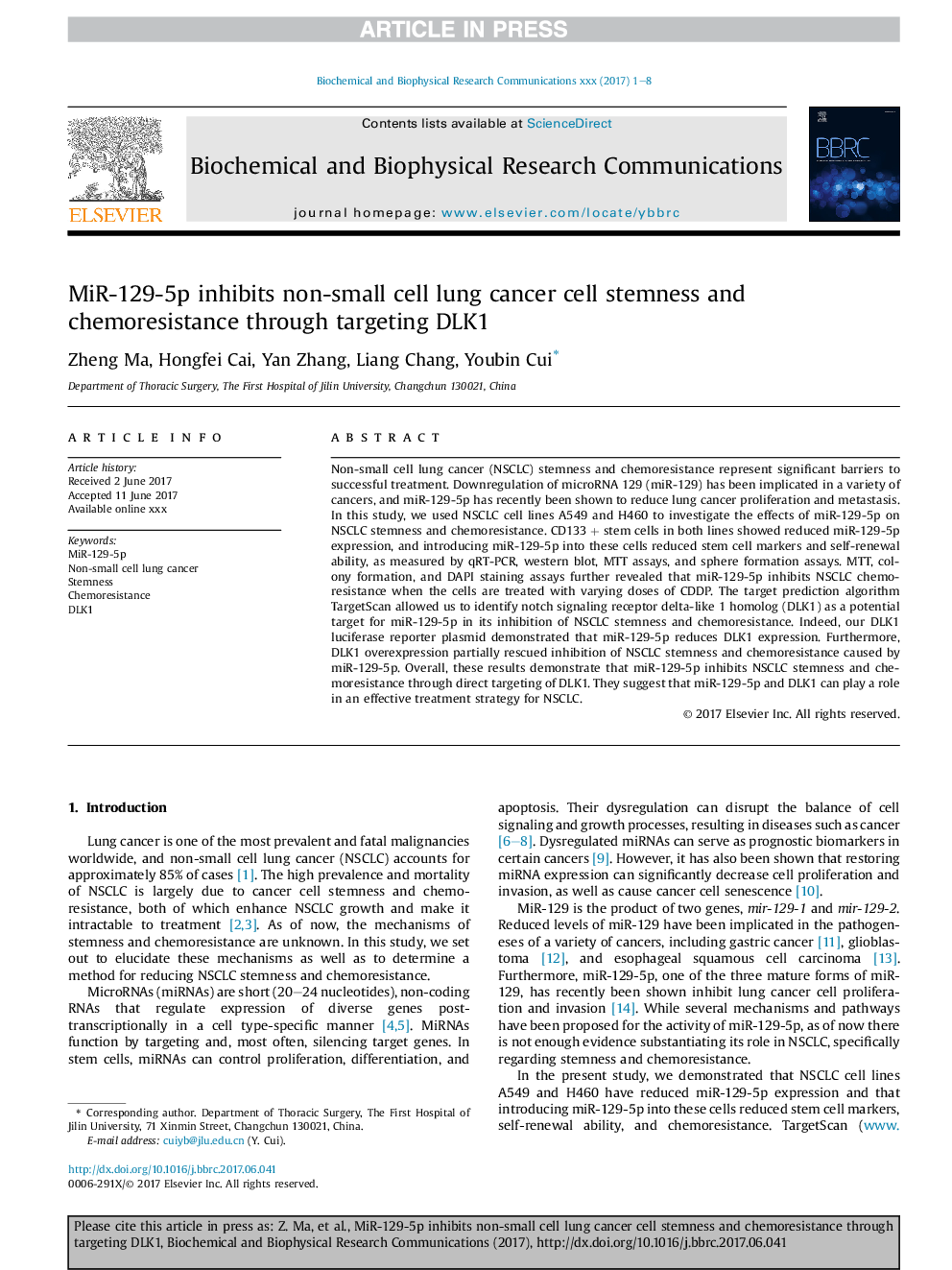| Article ID | Journal | Published Year | Pages | File Type |
|---|---|---|---|---|
| 5505230 | Biochemical and Biophysical Research Communications | 2017 | 8 Pages |
Abstract
Non-small cell lung cancer (NSCLC) stemness and chemoresistance represent significant barriers to successful treatment. Downregulation of microRNA 129 (miR-129) has been implicated in a variety of cancers, and miR-129-5p has recently been shown to reduce lung cancer proliferation and metastasis. In this study, we used NSCLC cell lines A549 and H460 to investigate the effects of miR-129-5p on NSCLC stemness and chemoresistance. CD133Â +Â stem cells in both lines showed reduced miR-129-5p expression, and introducing miR-129-5p into these cells reduced stem cell markers and self-renewal ability, as measured by qRT-PCR, western blot, MTT assays, and sphere formation assays. MTT, colony formation, and DAPI staining assays further revealed that miR-129-5p inhibits NSCLC chemoresistance when the cells are treated with varying doses of CDDP. The target prediction algorithm TargetScan allowed us to identify notch signaling receptor delta-like 1 homolog (DLK1) as a potential target for miR-129-5p in its inhibition of NSCLC stemness and chemoresistance. Indeed, our DLK1 luciferase reporter plasmid demonstrated that miR-129-5p reduces DLK1 expression. Furthermore, DLK1 overexpression partially rescued inhibition of NSCLC stemness and chemoresistance caused by miR-129-5p. Overall, these results demonstrate that miR-129-5p inhibits NSCLC stemness and chemoresistance through direct targeting of DLK1. They suggest that miR-129-5p and DLK1 can play a role in an effective treatment strategy for NSCLC.
Related Topics
Life Sciences
Biochemistry, Genetics and Molecular Biology
Biochemistry
Authors
Zheng Ma, Hongfei Cai, Yan Zhang, Liang Chang, Youbin Cui,
